Disclosure: This article contains affiliate links. We may earn a commission from purchases at no extra cost to you, which helps our travel content.
There's something profoundly magical about standing on the edge of Tiger's Nest Monastery, watching prayer flags dance against Bhutan's emerald valleys below. My recent two-week immersion into the Kingdom of Bhutan wasn't just travel—it was transformation. As someone who seeks educational value in luxury experiences, Bhutan presented the perfect alchemy: a country measuring success in Gross National Happiness rather than GDP, where ancient Buddhist traditions thrive alongside carefully managed modernization. This spring, I secured rare permissions and exclusive access to monasteries typically closed to tourists, enjoyed private audiences with monks and artisans, and experienced cultural rituals few outsiders witness. Join me as I unveil how to experience the authentic royal Bhutan—where luxury means not just comfort, but privileged access to sacred knowledge and traditions that have remained unchanged for centuries.
Securing Your Royal Bhutan Experience: The Essential Preparations
Bhutan's approach to tourism—high-value, low-impact—means preparation begins months before arrival. The kingdom's daily tourist tariff (currently $250 per person per day in high season) covers basic accommodations, transportation, and a guide, but to access truly exclusive experiences, you'll need to work with specialized operators.
After extensive research, I partnered with Bhutan Spirit Sanctuary, whose connections to local monasteries and royal family members opened doors typically closed to visitors. Their royal heritage package secured private blessings at Gangtey Monastery, after-hours access to Punakha Dzong, and meditation sessions with senior monks—experiences impossible to arrange independently.
Preparing for altitude is crucial; Paro sits at 7,300 feet and some monastery treks take you above 10,000 feet. I started taking chlorophyll supplements two weeks before arrival and packed my trusty pulse oximeter to monitor oxygen levels during higher elevation stays. This small device provided peace of mind during monastery treks and helped me pace my acclimatization.
Visa arrangements require patience—your tour operator handles applications, but you'll need to provide clear passport scans and passport-style photos at least 30 days before arrival. Pack smart: Bhutan's modest dress code requires shoulders and knees covered when visiting religious sites, and you'll need comfortable hiking boots for monastery visits. My hiking boots proved perfect for the sometimes slippery stone paths leading to mountaintop temples, providing ankle support while remaining comfortable for all-day wear.

💡 Pro Tips
- Book with operators who have connections to monastery abbots for private access permissions
- Begin altitude acclimation supplements 2 weeks before arrival
- Pack a pulse oximeter if you're concerned about altitude adjustment
- Bring cash in clean, crisp USD for shopping—credit cards are limited outside luxury hotels
Thimphu: Private Audiences with Master Artisans
Thimphu balances its status as the world's only capital without traffic lights with surprising cultural sophistication. My journey began with an exclusive visit to the Royal Textile Academy, where—unlike regular tourists who view exhibits from behind glass—I enjoyed a private demonstration with a master weaver of kushutara, Bhutan's most complex textile art. Through my guide's royal connections, we arranged for the academy director herself to explain how these intricate patterns tell Buddhist stories through silk and gold thread.
The real privilege came in my private visit to the government-sponsored School of Traditional Arts. While standard tours observe students from a distance, my arrangements included a half-day apprenticeship with a master thangka painter. Under his guidance, I learned the sacred geometry behind these devotional paintings and the mineral-based pigment preparation techniques unchanged for centuries. The master explained how each brush stroke becomes a form of meditation—a lesson in patience I'm still processing.
The National Memorial Chorten, typically crowded with worshippers, opened exclusively for our small group one evening after public closing. Watching elderly Bhutanese complete their 108 circumambulations around the stupa at sunset, prayer wheels spinning under their weathered hands, provided a profound lesson in devotion that no museum placard could convey.
For accommodations, I bypassed the expected luxury chains for Zhiwa Ling Ascent, a Bhutanese-owned property where traditional architecture houses modern comforts. My suite featured hand-carved wooden details by local artisans alongside heated bathroom floors and panoramic valley views. The property arranged a private dinner with a respected Buddhist scholar who explained the philosophical concepts behind Bhutan's development philosophy while we enjoyed organic dishes from the hotel's farm.

💡 Pro Tips
- Request a private appointment with the Royal Textile Academy through your tour operator at least 60 days in advance
- Arrange a meditation session with monks at Changangkha Lhakhang early morning before tourist arrivals
- Visit the Folk Heritage Museum restaurant for an authentic Bhutanese meal in a 300-year-old restored farmhouse
Sacred Access: Monastery Experiences Beyond the Tourist Path
The heart of Bhutan's allure lies in its monasteries, but few travelers experience them beyond rushed group tours. Through specialized arrangements, my journey included overnight stays and dawn rituals typically reserved for practitioners.
In Paro Valley, our connection with a senior monk at Rinpung Dzong granted access to the monastery's inner sanctum during morning prayers. Unlike day visitors restricted to outer courtyards, I sat cross-legged among young monks as they chanted ancient texts, the butter lamps flickering against centuries-old murals. The monastery's abbot later invited our small group for butter tea in his private quarters, explaining esoteric Buddhist concepts with surprising humor and contemporary references.
The crowning experience was our special permission to stay overnight at Bumdra Monastery, following a challenging 3-hour hike up from Paro Valley. While most tourists make day trips to Tiger's Nest (Taktsang) Monastery, few realize you can trek above it to this higher, rarely-visited sacred site. Arrangements through Bhutan Spirit Sanctuary included comfortable camping with proper beds, gourmet meals, and—most precious—permission to join the sole monk resident for his dawn prayers.
Waking at 5 AM to the sound of a conch shell, I witnessed the sunrise illuminating the sacred peaks while participating in meditation practices that have continued unbroken for centuries. My travel journal quickly filled with reflections that morning—some experiences simply can't be captured in smartphone photos. This leather-bound journal became my constant companion, recording not just itineraries but the philosophical insights gained from these privileged encounters with Bhutan's spiritual guardians.
For those seeking similar access, monastery overnight stays require applications months in advance through operators with established relationships with religious authorities. These permissions aren't granted based on money alone but on demonstrated sincere interest in Bhutanese spirituality.

💡 Pro Tips
- Request monastery overnight permissions at least 4 months in advance
- Bring a thoughtful gift for monastery abbots—traditional incense or high-quality tea from your home country is appropriate
- Learn basic meditation postures before arrival to participate comfortably in longer ceremonies
Cultural Immersion: Private Rituals and Royal Connections
Beyond architectural wonders, Bhutan's true luxury lies in cultural access—experiences that money alone cannot buy without the right connections. Through carefully cultivated relationships, my journey included participation in family rituals and ceremonies rarely witnessed by outsiders.
In a village outside Thimphu, we were invited to a private blessing ceremony for a newborn child. The family—relatives of our guide—welcomed us into their traditional farmhouse where a monk performed ancient protection rituals. We sat on hand-woven mats as he created an intricate sand mandala, explaining each symbol's significance in ensuring the child's prosperous future. Later, the grandmother taught me to prepare suja (butter tea) and red rice in their centuries-old kitchen, a cultural exchange no cooking class could replicate.
Through Bhutan Spirit Sanctuary's royal connections, we secured an extraordinary invitation to observe preparations for a royal family celebration at Tashichho Dzong. While the fortress serves as administrative headquarters, sections remain royal ceremonial spaces closed to regular tourism. Watching royal attendants prepare elaborate butter sculptures and flower arrangements according to traditions dating back to the 17th century provided insights into Bhutan's living cultural continuity that no museum could offer.
Perhaps the most memorable evening was our private dinner with a descendent of Divine Madman Drukpa Kunley, a revered 15th-century Buddhist master known for unconventional teaching methods. In his traditional home near Punakha, he shared family stories passed through generations while his wife served homemade ara (rice wine) in vessels carved by his grandfather. The evening culminated in an impromptu folk song performance that had us all dancing by firelight—a genuine cultural exchange far removed from staged tourist performances.
Capturing these precious moments required sensitivity. My mirrorless camera proved ideal, with its silent shooting mode allowing unobtrusive documentation of ceremonies without disrupting their sanctity. The camera's exceptional low-light performance perfectly captured the butter lamp-lit monastery interiors without flash.

💡 Pro Tips
- Request family ceremony visits through guides with personal connections in villages
- Learn basic Dzongkha greetings to show respect when meeting elders or religious figures
- Bring small, thoughtful gifts from your home country when invited to private homes
Luxury Accommodations with Educational Value
Bhutan's approach to luxury hospitality defies Western expectations—here, exclusivity means cultural immersion rather than mere opulence. I carefully selected properties that balance comfort with educational opportunities, avoiding international chains in favor of locally-owned establishments with deeper community connections.
Amantaka in Thimphu exemplifies this philosophy. While offering expected luxuries—heated infinity pools overlooking pine forests, spa treatments using indigenous herbs—their true distinction lies in cultural programming. My suite featured museum-quality thangka paintings and textiles with detailed provenance information. The property arranged private lectures with visiting scholars each evening, covering topics from Buddhist philosophy to environmental conservation. Their sustainability initiatives include funding local artisan apprenticeships to preserve dying crafts.
In Paro, Zhiwa Ling Heritage provided my most memorable stay. This Bhutanese-owned property was hand-built by local craftsmen without using a single nail, following ancient architectural traditions. My suite featured hand-carved wooden details created by the same artisans who work on monastery restorations. Beyond physical luxury, the property's distinction was its working temple on the top floor where guests can join staff for morning and evening prayers.
For those seeking complete immersion, my three nights at Gangtey Lodge in the remote Phobjikha Valley offered unparalleled access to black-necked crane conservation efforts. The lodge's floor-to-ceiling windows framed the valley where these endangered birds perform their sacred dances. Each evening, the property hosted intimate conversations with conservation biologists and local farmers about sustainable coexistence with wildlife.
While luxury properties offer convenience, I found equal value in a two-night homestay with a former royal attendant's family in Punakha. Their centuries-old farmhouse has been carefully modernized with private bathrooms and comfortable bedding while maintaining authentic architecture. Evenings spent learning traditional board games and helping prepare buckwheat noodles provided cultural insights no hotel could match, however luxurious.
For tracking arrangements across multiple properties, I relied on my travel organizer with its thoughtfully designed compartments for electronics, documents and daily essentials. This lightweight backpack proved perfect for day trips to monasteries while keeping my camera and journal protected.

💡 Pro Tips
- Request rooms with direct views of monastery complexes for dawn prayer viewing
- Book properties with Bhutanese ownership for more authentic cultural programming
- Arrange at least one farmhouse homestay through the Bhutan Homestay Network for cultural contrast
Final Thoughts
As my helicopter lifted off from Paro's emerald valley on my final morning, prayer flags fluttering below, I reflected on how Bhutan had redefined luxury travel for me. True privilege here isn't measured in thread counts or champagne brands, but in moments of authentic connection and sacred access. This journey reminded me that the most valuable luxury in our hyperconnected world is genuine cultural immersion—experiences that transform rather than merely entertain. Bhutan's careful balance of preservation and controlled access ensures these encounters remain meaningful rather than commodified. Whether you're meditating alongside monks at dawn, learning ancient crafts from master artisans, or sharing butter tea with village elders, Bhutan offers education wrapped in exclusivity. For couples seeking profound shared experiences rather than mere indulgence, the Kingdom of Happiness provides a template for mindful luxury that other destinations would be wise to follow. The memories that will linger longest aren't of material comforts, but of morning light streaming through monastery windows as ancient chants filled the air—moments of transcendent beauty worth far more than their considerable cost.
✨ Key Takeaways
- Work with specialized tour operators with monastery connections for exclusive access permissions
- Balance luxury accommodations with authentic homestay experiences for cultural contrast
- Request private cultural experiences rather than group tours whenever possible
- Allow extra days for unexpected invitations and ceremonies that often arise organically
📋 Practical Information
Best Time to Visit
March-May (spring) or September-November (fall)
Budget Estimate
$1,000-1,500 per person per day including special access arrangements
Recommended Duration
Minimum 10 days, ideally 14-16 days
Difficulty Level
Moderate Due To Altitude And Monastery Hikes









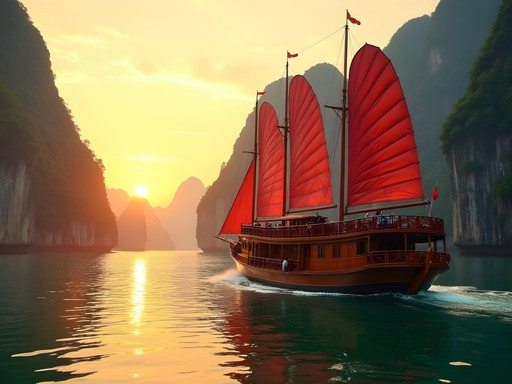

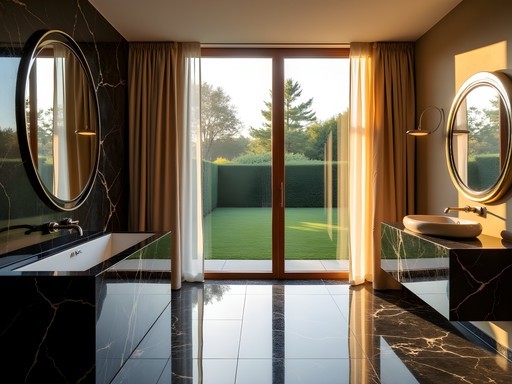
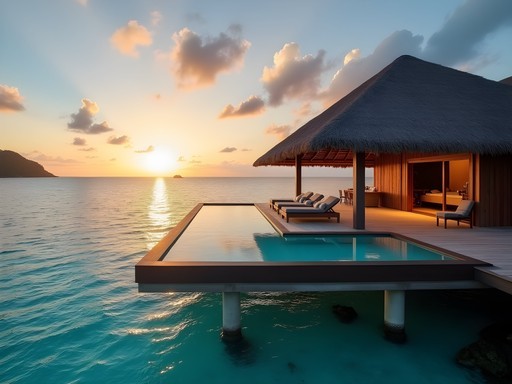
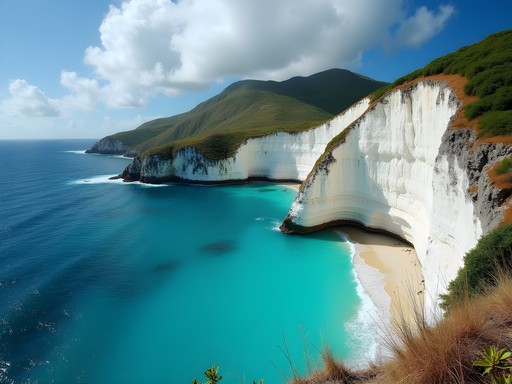

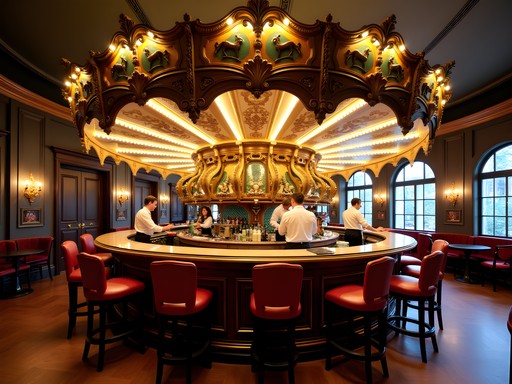
Comments
Sage Dixon
Nova, your experience mirrors mine in many ways! I trekked through Bhutan last year, though without quite the royal treatment you received. The Tiger's Nest monastery climb was humbling - that final ascent had me questioning my fitness level! I found carrying a hiking daypack essential for those monastery treks. One tip for others planning a visit: take time to attend a local archery competition if possible. It wasn't on my itinerary, but my guide suggested it, and watching the national sport with locals cheering was one of my most authentic experiences. Did you get a chance to try your hand at archery?
Nova Rice
Yes! I did try archery and was absolutely terrible at it, much to the amusement of the locals. Such a humbling and joyful experience. Your point about the Tiger's Nest climb is spot on - those stairs are no joke!
cityone8172
Is Bhutan suitable for someone who's not super fit? The monastery looks amazing but I'm worried about the hiking.
Sage Dixon
@cityone8172 There are options! For Tiger's Nest specifically, you can ride a horse halfway up. Many sites are also accessible by vehicle. Just be upfront with your tour operator about your fitness level and they can customize accordingly.
CalmExplorer
Those prayer flag photos against the mountains are stunning! What camera setup did you use?
cityone8172
Those prayer flags against the mountains are just magical! Bhutan is definitely on my bucket list now.
summerbackpacker
This looks incredible! How difficult was it to arrange those private monastery visits? I've heard Bhutan has strict tourism policies. Did you need special connections or was it just part of a high-end tour package?
Nova Rice
Thanks for asking! The private monastery access was arranged through a specialty tour operator with royal connections. While it was definitely a premium experience, you don't necessarily need personal connections - just be prepared for the substantial daily tourist fee (currently $250/day) and work with agencies that have established relationships with religious authorities. Worth every penny though!
summerbackpacker
That's really helpful, thanks! The daily fee is steep but for a once-in-a-lifetime experience, I might just save up for it. Did you find two weeks to be the right amount of time?
AsianAdventurer
Just returned from Bhutan last week and your post captures the magic perfectly! We didn't have the royal connections you did, but even the standard tourist experience was incredible. One tip for others planning trips: the daily tourist fee increased again this year, so budget accordingly. Also, the traditional hot stone bath after the Tiger's Nest hike was LIFE-CHANGING for sore muscles. Our guide arranged one with a local family in their farmhouse - such an authentic experience!
curious_traveler
What's the current daily fee? I heard it was pretty steep!
AsianAdventurer
$250/day in high season, $200/day in low season. Includes accommodation, food, guide, transport and your visa though!
mountain_wanderer
Going to Bhutan next month! How difficult was the hike to Tiger's Nest? I'm reasonably fit but worried about the altitude.
Nova Rice
It's challenging but doable if you're reasonably fit! Take it slow, stay hydrated, and consider spending 2-3 days in Paro first to acclimate. The path is well-maintained with a nice tea house halfway for breaks.
Sophia Gomez
I'll add that hiking poles were super helpful on the steeper sections! The views make every step worth it.
BhutanDreamer
This is exactly the kind of experience I want! Saving this post for future planning.
SustainableTraveler
I appreciate how Bhutan maintains its cultural integrity through controlled tourism. While the daily fee seems steep, seeing how it supports free healthcare and education for all Bhutanese makes it worthwhile. Nova, your post beautifully captures the spiritual essence without sensationalizing it. I visited last year and was moved by how the monasteries remain living spiritual centers rather than tourist attractions. Did you get to experience an archery competition? That was an unexpected highlight of my trip - the local enthusiasm was contagious!
NovaRice
Yes! Caught an impromptu archery match in a village near Punakha - absolutely electric atmosphere! Completely agree about the tourism model. It's refreshing to visit somewhere that prioritizes cultural preservation over mass tourism.
photoblogger
Those monastery photos are incredible! Did you need special permission to take pictures inside? I've heard some places are really strict about photography, especially during ceremonies.
Nova Rice
Good question! Yes, photography permissions were part of the special access arrangements. Each monastery has different rules - some allowed photos everywhere except certain sacred rooms, others only in courtyards. Always had to ask before shooting anything involving monks or ceremonies. I used my travel journal to note the specific rules for each place we visited.
Sophia Gomez
Nova, your post brought back incredible memories of my own Bhutan journey last year! That moment at Tiger's Nest is truly spiritual - I still get goosebumps thinking about it. Your connections for private monastery access are impressive though - I went the standard tourist route and while beautiful, I definitely missed those intimate moments you described with the monks. How far in advance did you need to arrange those special permissions? The cultural immersion section has me planning a return trip already!
Nova Rice
Thanks Sophia! I started planning about 8 months ahead with a specialized tour operator. The monastery permissions were arranged through local connections they've built over years. Happy to share contacts if you're planning that return trip!
Sophia Gomez
That would be amazing, Nova! I'll DM you for those details. Thinking about a winter trip this time to experience those traditional festivals you mentioned.
Venture X
Premium card with 2X miles, $300 travel credit, Priority Pass